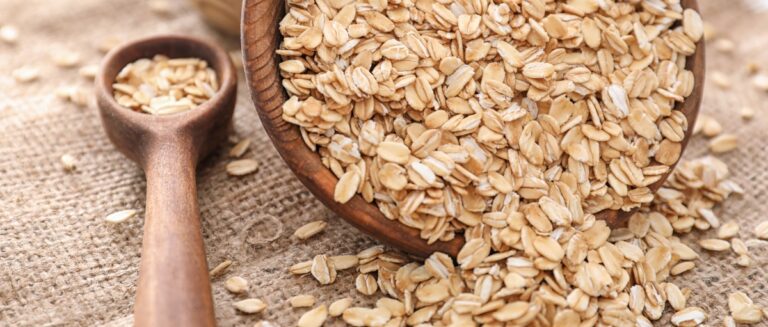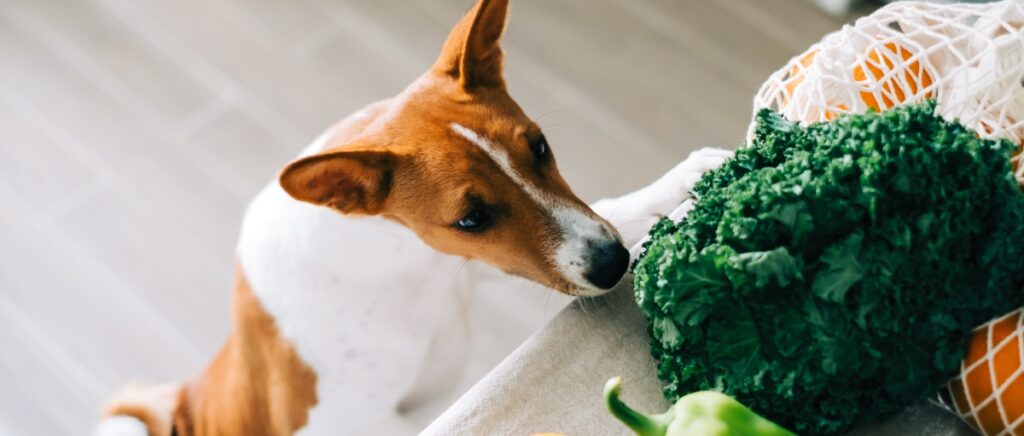As a dog owner, you want the best for your furry friend, including providing them with a balanced and nutritious diet. While high-quality dog food is essential, did you know that incorporating vegetables into your dog’s meals can offer many health benefits? In fact, a recent survey found that nearly 66% of baby boomers were the most conscientious about their dog’s diet.
Like humans, dogs can benefit from the vitamins, minerals, and fiber in various vegetables. The right vegetables can significantly affect your dog’s overall health and well-being, from improving digestion and maintaining a healthy weight to boosting the immune system and reducing inflammation. However, knowing which vegetables are safe and appropriate for your canine companion can be challenging with so much information available.
This article is a comprehensive guide to vegetables for dogs. We’ll explore the best options to include in your pet’s diet. You’ll learn the specific benefits of each vegetable, proper preparation and serving methods, and important precautions to keep in mind.
The Benefits of Healthy Vegetables for Dogs
Vegetables are not just fillers in a dog’s diet; they are packed with essential nutrients that can significantly improve your pet’s health. By incorporating the right vegetables into your dog’s meals, you can provide them with a wide range of vitamins, minerals, fiber, and antioxidants crucial for their overall well-being.
One key benefit of vegetables for dogs is their high fiber content. Fiber is vital in maintaining a healthy digestive system, promoting regular bowel movements, and preventing constipation and diarrhea. In fact, experts encourage that dogs fed a diet rich in fiber from vegetable sources have a lower incidence of digestive problems compared to those on a low-fiber diet.
Vegetables are also an excellent source of essential vitamins and minerals. For example, carrots are rich in beta-carotene, which the body converts into vitamin A, supporting healthy vision, skin, and coat. Spinach is packed with iron, crucial for maintaining healthy blood cells and preventing anemia. Sweet potatoes are an excellent source of vitamin C, which helps boost the immune system and promotes healthy skin and joints.
In addition to their nutritional value, vegetables can also help with weight management in dogs. Many vegetables are low in calories and high in fiber. This can help keep your dog feeling full and satisfied without consuming excess calories. This is particularly important for dogs who are prone to obesity or need to lose weight for health reasons.
Another significant benefit of vegetables for dogs is their antioxidant content. Antioxidants help protect cells from damage caused by free radicals, which can contribute to developing chronic diseases such as cancer and heart disease. Vegetables like broccoli, kale, and Brussels sprouts are particularly high in antioxidants, making them excellent additions to your dog’s diet.
Incorporating vegetables into your dog’s meals can also help reduce inflammation in the body. Chronic inflammation is linked to various health problems in dogs, including arthritis, allergies, and digestive issues. Vegetables such as green beans, celery, and cucumber contain anti-inflammatory compounds that can help alleviate these conditions and improve your dog’s overall health.
Offering your dog a varied diet of safe and nutritious vegetables provides essential nutrients. This helps them thrive. In the next section, we’ll explore the best vegetables to include in your dog’s diet and how to prepare them for maximum health benefits.
The Best Vegetables Safe for Dogs
When it comes to incorporating vegetables into your dog’s diet, it’s essential to choose safe, nutritious, and beneficial options for their health. Here are some of the best vegetables to consider:
Carrots
Carrots are an excellent source of beta-carotene, which the body converts into vitamin A. This vitamin is essential for maintaining healthy vision, skin, and coat. Carrots are also low in calories and fiber, making them an ideal snack for dogs watching their weight. Additionally, the crunchy texture of carrots can help promote dental health by gently scraping away plaque and tartar buildup on your dog’s teeth.
Green Beans
Green beans are a low-calorie, nutrient-dense vegetable that can be a great addition to your dog’s diet. They are packed with vitamins A, C, and K and minerals like iron and calcium. Green beans are also an excellent source of fiber, which can help support healthy digestion and promote feelings of fullness, making them a perfect snack for dogs trying to maintain a healthy weight.
Sweet Potatoes
Sweet potatoes are a nutritional powerhouse for dogs. They are rich in vitamin A, which supports healthy vision, skin, and coat, and vitamin C, which helps boost the immune system. Sweet potatoes are also a good source of fiber, which can aid in digestion and help regulate blood sugar levels. When preparing sweet potatoes for your dog, cook them thoroughly and remove the skin, as it can be difficult for dogs to digest.
Spinach
Spinach is a leafy green vegetable packed with nutrients beneficial for dogs. It is an excellent source of vitamins A, C, and K, as well as iron and calcium. Spinach also contains antioxidants that can help protect your dog’s cells from damage caused by free radicals. However, it’s important to note that spinach is also high in oxalic acid, which can interfere with calcium absorption, so it should be fed in moderation.
Pumpkin
Pumpkin is a great source of fiber, which can help regulate digestion and promote healthy bowel movements. It is also rich in vitamin A, which supports healthy vision, skin, and coat. Pumpkin is great for dogs with diarrhea or constipation, as it can help firm up loose stools or soften hard ones. Just be sure to use plain, canned pumpkin puree. Avoid pumpkin pie filling, which contains harmful added sugars and spices.
Other vegetables safe for dogs include:
- Broccoli (in moderation)
- Cauliflower
- Celery
- Cucumber
- Zucchini
By incorporating these vegetables into your dog’s diet, you can provide them with a wide range of essential nutrients that support their overall health and well-being.
How to Prepare Vegetables for Dogs
When incorporating vegetables into your dog’s diet, it’s essential to prepare and serve them in a way that maximizes their nutritional value and minimizes the risk of digestive issues. Here are some key points to keep in mind regarding how to prepare vegetables for dogs:
Cleaning and Cutting
Before serving any vegetables to your dog, be sure to thoroughly wash them to remove any dirt, pesticides, or other contaminants. Once cleaned, cut the vegetables into bite-sized pieces appropriate for your dog’s size to prevent choking hazards.
Cooked vs. Raw Vegetables
While some vegetables can be served raw, dogs better tolerate others when cooked. For example, raw carrots and green beans can be a refreshing and crunchy treat, while sweet potatoes and pumpkin are best served cooked to enhance their digestibility. Avoid using seasonings, oils, or butter when cooking vegetables for your dog, as these can upset their digestive system.
Proper Portion Sizes
When introducing vegetables into your dog’s diet, it’s crucial to start with small portions and gradually increase the amount over time. Generally, vegetables should make up no more than 10% of your dog’s daily caloric intake. Treats, including vegetables, should be given in moderation to avoid overfeeding and potential weight gain.
Introducing New Vegetables Gradually
To minimize the risk of digestive upset, gradually introducing new vegetables to your dog’s diet is essential. Start by offering a small amount of a single vegetable and monitor your dog’s reaction over 24-48 hours. If no adverse effects are observed, you can slowly increase the portion size and frequency of feeding. If your dog experiences digestive issues, such as vomiting or diarrhea, discontinue feeding the vegetable and consult your veterinarian.
Vegetables to Leave Out of Your Dog’s Diet
While many vegetables are safe and nutritious for dogs, some can be harmful or even toxic. Here are a few vegetables that should be avoided:
Onions and Garlic
Onions, garlic, and other Allium family members contain compounds called thiosulfates, which can damage a dog’s red blood cells, leading to anemia. Even small amounts of these vegetables can cause gastrointestinal irritation, nausea, and vomiting. Contact your veterinarian immediately if you suspect your dog has consumed onions or garlic.
Wild Mushrooms
While store-bought mushrooms are generally safe for dogs, wild mushrooms can be toxic and potentially life-threatening. Many wild mushroom species contain toxins that can cause severe gastrointestinal distress, liver failure, and even death. If you suspect your dog has ingested wild mushrooms, seek veterinary care immediately.
Other Harmful Vegetables
Some other vegetables that should be avoided include:
- Avocado (contains persin, which can cause vomiting and diarrhea)
- Rhubarb (contains oxalates, which can lead to kidney damage)
- Tomato plants (stems and leaves contain solanine, a toxic compound)
Nourishing Your Dog’s Immune System with Safe and Nutritious Vegetables
Adding the best vegetables for dogs to your pet’s diet offers many health benefits. This can lead to improved digestion, better weight management, a stronger immune system, and reduced inflammation. To help your furry friend thrive, simply choose the right vegetables, prepare them properly, and serve them in appropriate portion sizes.
Remember to always introduce new vegetables gradually and monitor your dog’s reaction closely. If you have any concerns about your dog’s nutritional needs or health status, consult with your veterinarian for personalized advice and guidance.
Take a proactive approach to your dog’s nutrition. By embracing the power of vegetables, you can help ensure that your beloved companion enjoys a long, healthy, and happy life by your side.
Sources
Barkbus Study on Dog Food: Barkbus. (2022, April 12). Study: Do you know what’s in your dog’s food? Barkbus. https://www.barkbus.com/blog/study-do-you-know-whats-in-your-dogs-food
PetMD on Balanced Dog Food: PetMD Editorial. (2020, January 20). What’s in a balanced dog food? PetMD. https://www.petmd.com/dog/nutrition/evr_dg_whats_in_a_balanced_dog_food
Thrive Dog Kitchen on Nutrient-Packed Fruits and Vegetables: Thrive Dog Kitchen. (n.d.). 10 nutrient-packed fruits and vegetables for a healthier dog. Thrive Dog Kitchen. https://thrivedogkitchen.co.nz/blogs/blog/10-nutrient-packed-fruits-and-vegetables-for-a-healthier-dog
Royal Canin on Dietary Fiber: Royal Canin. (n.d.). Dietary fiber: The clinician’s secret weapon. Royal Canin Vet Focus. https://vetfocus.royalcanin.com/en/scientific/dietary-fiber-the-clinicians-secret-weapon
AKC on Dog Food for Stomach Upset: American Kennel Club. (2023, May 12). What can I feed my dog for an upset stomach? AKC. https://www.akc.org/expert-advice/nutrition/food-for-dogs-stomach-upset/
Pawlicy on Vegetables for Dogs: Pawlicy Advisor. (2023, April 14). Vegetables dogs can and can’t eat. Pawlicy Advisor. https://www.pawlicy.com/blog/vegetables-dogs-can-and-cant-eat/











